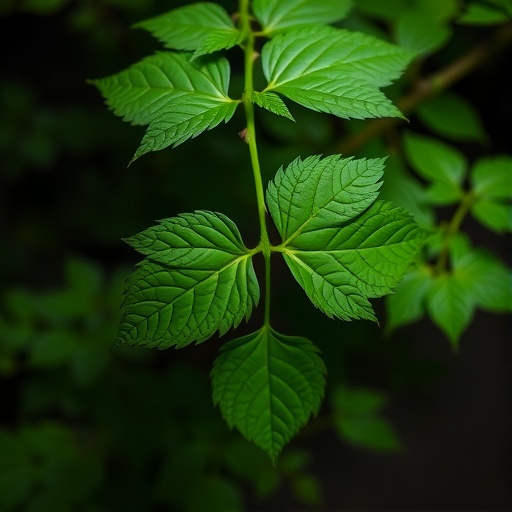Recent advancements in the field of reproductive health have shed light on the critical impact of environmental toxins on testicular function. A powerful study conducted by Hussain et al. has come to the forefront, revealing how polyherbal therapies can effectively counteract the detrimental effects of CCl₄-induced testicular toxicity. Using a multifaceted approach that includes in vitro, in vivo, and in silico methodologies, the researchers have illuminated the intricate mechanisms behind testicular damage and the potential restorative properties of herbal remedies.
As industrialization continues to rise, the exposure to environmental toxins like carbon tetrachloride (CCl₄) has become a significant concern. Known for its hepatotoxic effects, CCl₄ also adversly affects male reproductive health. This compound can lead to oxidative stress, apoptosis, and a cascade of biological events that compromise testicular function. Hussain and his team meticulously mapped these pathways, connecting them to the modulation of sex hormone-binding globulin (SHBG), AKT1, and androgen receptors (AR), all of which play pivotal roles in testicular physiology.
In their study, the researchers implemented a rigorous experimental design that delved into the cellular and molecular effects of CCl₄. Through in vitro assays, they isolated testicular cells to observe the harmful effects of the toxin directly. The results indicated a veritable decline in cell viability and functionality, suggesting that CCl₄ disrupts the normal homeostasis within the testicular environment. The oxidative stress induced was profound, leading to compromised cellular signaling and an inability for the cells to recover from damage.
Complementing the in vitro findings, the in vivo component of the research involved administering CCl₄ to animal models to enact similar testicular toxicity. The controlled studies highlighted the systemic effects of the toxin, demonstrating a decrease in testosterone production and alterations in sperm parameters. The resulting infertility risks prompted the researchers to seek viable interventions, leading them to explore the efficacy of polyherbal formulations.
Intriguingly, the polyherbal therapeutic strategies that Hussain et al. examined showed promise in ameliorating the effects of CCl₄-induced toxicity. These herbal mixtures incorporated a diverse array of botanical extracts known for their antioxidant properties. The synergistic effects of these herbal constituents demonstrated their capacity to mitigate oxidative damage, restore cellular function, and ultimately revive impaired reproductive outcomes.
To further understand the underlying mechanisms of these herbal therapies, the research team employed advanced in silico techniques. Utilizing computational models, they were able to predict how the herbal components interact with key molecular targets such as AKT1 and AR. This integrative methodology not only validated the bioactivity of the herbal formulations but also provided a comprehensive mapping of their action pathways against testicular toxicity.
The findings from this research are not just theoretically significant; they hold practical implications for the development of novel treatments for male infertility linked to environmental toxin exposure. By demonstrating how polyherbal therapies can offset the adverse effects of CCl₄, Hussain et al. have opened up avenues for innovative, plant-based approaches in reproductive medicine. This is particularly vital as the global concern over fertility issues continues to escalate.
Moreover, the study sets a precedent for exploring plant-based treatments in broader contexts. The shift towards sustainable, nature-derived therapies contrasts sharply with traditional pharmacological approaches that often entail synthetic chemicals and their associated side effects. The research heralds a new era where integrative medicine frameworks could effectively combine herbal medicine with modern scientific methodologies.
As awareness about the dangers of environmental toxins grows, the call for efficient mitigation strategies becomes increasingly urgent. This study exemplifies how blending ancient wisdom with contemporary scientific methods offers hope for addressing complex health issues. Moving forward, it is essential to bolster research in this area, focusing not only on reproductive health but also on other health sectors adversely affected by environmental toxins.
The comprehensive nature of Hussain et al.’s research further emphasizes the necessity of interdisciplinary collaboration. Future studies could benefit from partnerships among biologists, toxicologists, herbalists, and medical practitioners to develop more profound insights and refine therapeutic strategies. The future of reproductive health may very well rely on such holistic approaches, where both science and tradition coexist harmoniously.
Understanding the intricate biological, chemical, and ecological interactions at play is essential for the ongoing battle against infertility linked to environmental toxins. As research progresses, further elucidation of the mechanisms by which herbal therapies operate will pave the way for greater insights and innovative treatment protocols. Such endeavors will not only preserve male reproductive health but will also serve as a model for addressing other toxin-related health complications facing society today.
In conclusion, the research led by Hussain et al. offers a beacon of hope in the realms of reproductive health and environmental toxicity. It underscores the importance of safeguarding male reproductive function and sets the stage for the exploration of natural remedies in combating the adverse effects of pollutants like CCl₄. As the world becomes increasingly aware of the dire implications of environmental destruction, studies like this can lead to significant strides in public health and individual well-being.
Subject of Research: Polyherbal Therapeutics and their effects on CCl₄-induced testicular toxicity
Article Title: Polyherbal Therapeutics Mitigate CCl4-Induced Testicular Toxicity through Modulation of SHBG, AKT1, and AR Pathways: An Integrated In Vitro, In Vivo, and In Silico Approach
Article References:
Hussain, S., Javed, A., Razia, D.E. et al. Polyherbal Therapeutics Mitigate CCl4-Induced Testicular Toxicity through Modulation of SHBG, AKT1, and AR Pathways: An Integrated In Vitro, In Vivo, and In Silico Approach.
Reprod. Sci. (2025). https://doi.org/10.1007/s43032-025-01998-1
Image Credits: AI Generated
DOI: https://doi.org/10.1007/s43032-025-01998-1
Keywords: CCl₄, polyherbal, testicular toxicity, SHBG, AKT1, AR, reproductive health, oxidative stress




